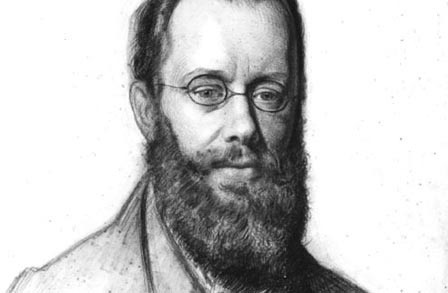In the late 1800’s, a great power was brewing in the far west of the world and it was ready to take over the poor and the wretched of all the lands and build a new kingdom together with empathy and opportunity for all. This new age giant is what we know as America today and the poem, The New Colossus, is about all the ideals that helped shaped this land of dreams and achievements. Emma Lazarus is the American poet who wrote this sonnet in the year 1883, to raise funds for the construction of a pedestal on which the Statue of Liberty stands. The poem garnered immense fame and popularity in the coming years and a bronze plaque was cast and fitted inside the pedestal’s lower level. At first, when she was approached to write the poem, Emma refused but she was later convinced by writer Constance Cary Harrison as he showed her the kind of inspiration it would be for immigrants sailing in from other countries and who were hoping to make America their new home. The strong poet and activist died in 1887, at a young age after she returned from her second trip to Europe. She led a difficult and complicated life which is why her name is celebrated but still obscure in American history.
As a leading Jewish American author, Emma was an illustrated member of the New York literary elite and received accolades for her contribution in the field of American poetry. She went on to write many powerful pieces on the invasion of anti-Semitism in society and continued to fight for the rights of Russian immigrants. Being a woman in the late-nineteenth century gave her little scope to succeed against the unequal treatment meted out to her by the still patriarchal society but she thundered through it and emerged victorious through her writings. This enigmatic woman had a rich and colorful life but the poem The New Colossus has etched her name in history forever.
Plot & Setting
The giant effigy titled the Statue of Liberty was built by the French sculptor, Frederic Auguste Bartholdi. Originally it was not intended to become a symbol of immigration but it came to be represented so after The New Colossus was written and mounted upon it. Instead of simply standing for the principles of international republicanism, it eventually served the purpose of being an empathic symbol of hope to the poor and rejected. The poem along with the sign of liberty and freedom helped shaped the immigration policy of America. The poem played an important role in the repurposing of the greatest monument of free America. It gave a birth to an era of equal struggle and equal opportunity in the form of the Great American Dream.
Summary
The poem begins with a stark comparison between two great monuments, one old and the other new. The male Colossus of Rhodes in ancient Greece was interpreted by many as a male figure of patriarchal ego and a display of masculinity and chauvinism. It intimidates all those who gaze upon it and represents a show of ownership. This hundred-and-ten feet tall statue of the Greek God Helios was sign of warfare and victory. The poet compares it with the newly erected Statue of Liberty by insinuating the differences and what it stands for.
The graceful statue of a woman with a torch held out in one hand represented a symbol of hope, encouragement and justice for the downtrodden. This female figure was a breaker of norms all around the world as it represented the matriarchal power of kindness and inclusion. The statue of Liberty being of such great political significance ushered in a new and positive perspective in the treatment of women in general society. The poet’s famous lines “A mighty woman with a torch, whose flame/ Is the imprisoned lightning,” captured the creator’s imagination of the statue and stands opposing for everything that is cruel, spiteful and privileged. It closely resembles the tale of the demi-god Prometheus who stole the lightning from Zeus to help the tortured humans get the gift of fire and warmth. The poet wished for her readers who entered the nation of America, to receive the same message of hope, refuge and sanctity from war. In fact, she hoped that the statue could stand for the opposite of what the Colossus of Apollo once stood for. She describes the dangerously tall effigy of the sun-god as “conquering limbs astride from land to land”, whereas the Statue of Liberty is described in the text as “The Mother of Exiles” who welcomes “the homeless, the tempest-tost” as she lifts her lamp to show them the way to a brighter future.
The sonnet speaks of differences and similarities; it brings together the old and the new in such a manner so as to retain the majestic beauty of the old but with an updated outlook that could only change the world for the better. The poet through her verses gives the statue an ambiguous yet gentle personality who doesn’t discriminate among all those who come to her seeking for a safe haven. Her “silent lips” speak volumes for the wretched while her “mild eyes” are commanding awe and gratitude in all those who behold her standing guard at the harbor of the twin cities of America. Emma Lazarus’ famous lines “Give me your tired, your poor, your huddled masses yearning to breathe free” made a resounding impact upon the future political and economical policies of America. It definitely helped create a mighty and exemplary image of greatness and goodness for the nation in coming times. The poem ends on a powerful statement where the statue no longer remains only in description; here she herself speaks through her silent lips of all the atrocities of the ancient world. The condescending voice of a troubled mother speaks through her as she says that she wants not the glory of the past but only wishes to welcome the tired, the poor who seek solace and freedom from the abuses of the world under her kind and embracing sky.
Some online learning platforms provide certifications, while others are designed to simply grow your skills in your personal and professional life. Including Masterclass and Coursera, here are our recommendations for the best online learning platforms you can sign up for today.
The 7 Best Online Learning Platforms of 2022
- Best Overall: Coursera
- Best for Niche Topics: Udemy
- Best for Creative Fields: Skillshare
- Best for Celebrity Lessons: MasterClass
- Best for STEM: EdX
- Best for Career Building: Udacity
- Best for Data Learning: Pluralsight













